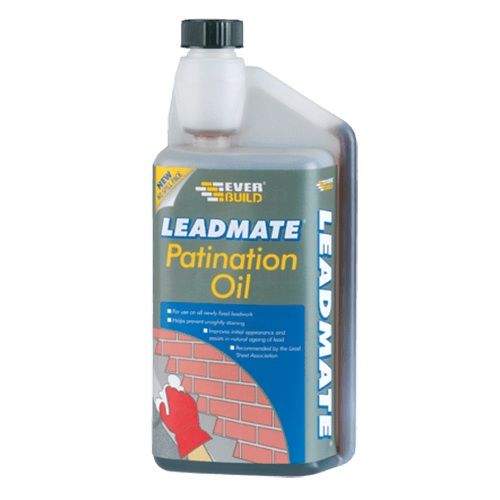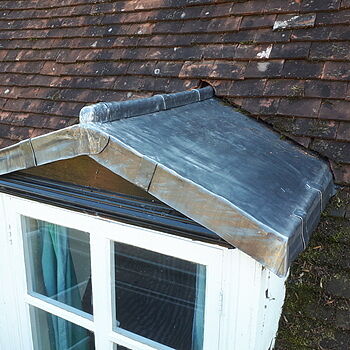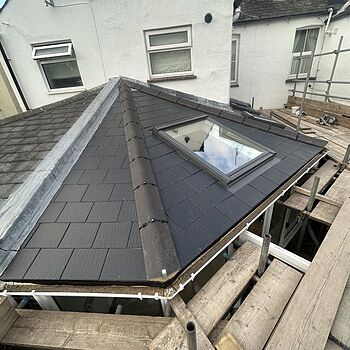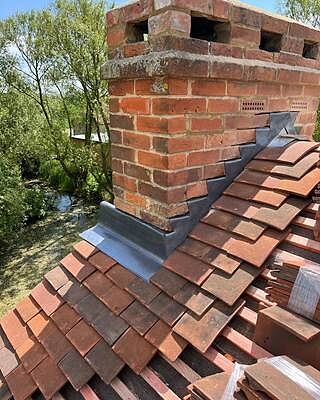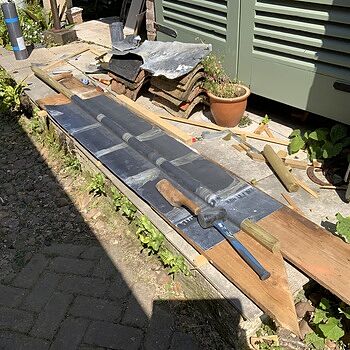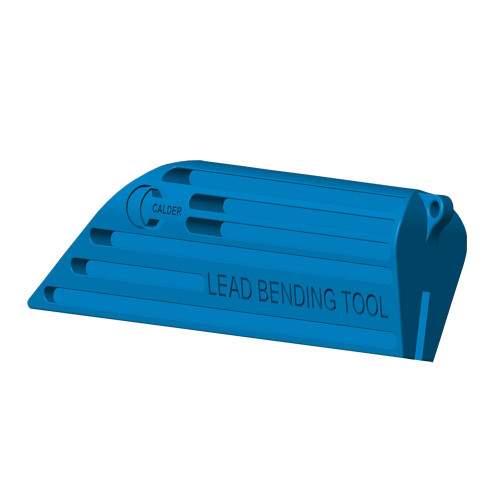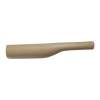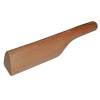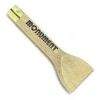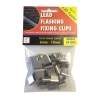Lead flashing is an integral part of the construction process of a building and has been used for hundreds of years to create a watertight and durable seal between two sections, for example, the roof and a wall, or the roof and a chimney. But why is lead flashing important, and how do you cut and fit lead flashing? Read on to find out more, and don’t hesitate to get in touch if you have any questions or queries.

What is lead flashing?
Lead flashing is a piece of milled lead that sits between joints to create a durable and weathertight seal. Lead flashing has been used for hundreds of years in situations such as where a roof meets a wall, on a roof valley, around other penetrations such as chimneys, pipes, and around window and door openings.

Lead is the most common material used for flashings, due to its durability, flexibility, and non-corrodible properties. By opting for the milled lead as your flashing material, it will easily be moulded around any complex shapes or structures whilst retaining its strength and durability.
Here at Roofing Superstore, we have a wide range of lead rolls with various thicknesses, suitable for a number of different applications – take a look at our guide to lead codes for more information.
How to cut lead flashing
Here at Roofing Superstore, we offer a cut-to-size service for your lead flashing requirements, allowing you to minimise time and labour spent on cutting lead flashing on-site, as well as minimising waste.
However, if you do need to cut your lead flashing, it is important to cut the lead flashing correctly to ensure it sits tightly on the roof and works effectively.
The most effective way of cutting lead flashing is to use a sheet lead knife – the sheet lead knife is sharp and durable and does not become blunt very quickly. The sheet lead knife also features a hook at the end of the blind to help score metal sheets.
If you don’t have a lead sheet knife, a normal utility knife can be used, but the blade will become blunt quite quickly. Using the knife, you can either score an accurate and straight line across the surface of the lead flashing with a guide, before bending it to break it or cut through the flashing.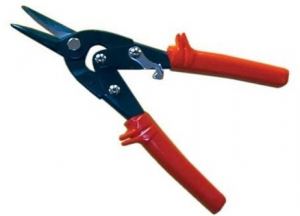
Alternatively, aviation snips can be used to cut lead – they have been manufactured specifically to create sharp cuts through durable metal sheeting.
How to fit lead flashing
Whether you’re looking for information on how to fit lead flashing on a pitched roof, how to fit lead flashing on a conservatory, or how to fit lead flashing on any other application, it is crucial to ensure the lead flashing is fitted accurately in order to create a weathertight and durable cover.
1. Remove mortar
When fitting flashing where a flashing product hasn’t previously been installed, the mortar will generally need to be removed from brickwork – particularly when installing flashing between a wall and a roof, above windows and doors, and in other situations involving brickwork.
The mortar should ideally be removed from the brickwork course that sits around 150mm above the roof. The mortar is best removed using a mortar raking desk or similar tool, but can also be done with a hammer and chisel, and should be removed to a depth of around 15-20mm.
2. Measurements
Measure the distance from the chase depth (the amount of lead that goes into the brickwork), the distance from the chase to the join in the roof, and then the distance from the join across the roof covering or the second surface.
The recommended overlap from the join to the end of the flashing should be around 150mm.
3. Cut lead to size
Now cut a piece of milled lead to around 1.2m long, with the measured distance as the width of the lead. If it is any longer than 1.2 metres long, the lead will be harder to shape and more likely to split over time.
4. Shape the lead flashing
To fit the lead flashing onto the roof, lead dressing tools can be used. A lead dresser is used to smooth out any wrinkles or folds within the lead sheet, bossing mallets and lead chase wedges are used to drive the lead sheet into the desired shape, ensuring it fits right into the brickwork and corners, lead bending tools are used to bend the sheeting into the right shape and lead bossing tools are used to shape corners and work the lead around any structures.
Using the lead dressing tools and the measurements of the desired location of the flashing, bend and fold the flashing into the desired shape. If needed, use a straight edge to help pull the flashing into the correct shape.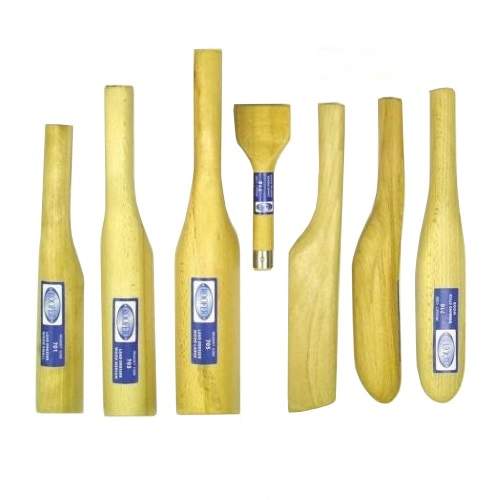
5. Fit ledge straps
Once the lead has been shaped correctly, fit ledge straps onto the nails that are holding the tiles that will be covered by the flashing in place. The ledge straps should be around 600mm apart, but this varies slightly according to the location of the pre-existing nails. The ledge straps provide resistance to help prevent the flashing from sliding down the roof over time and also help to minimise the effect of strong winds causing uplift.
6. Install the flashing
Now place the folded lead flashing into place. Each piece of lead flashing should overlap the previous section by a minimum of 100mm, to ensure that it remains weatherproof and does not result in leakage over time.
7. Install fixings
Fixings can now be installed. Traditionally, small pieces of scrap lead are rolled up and fitted into the chase between the lead and brickwork, by driving them in with a hammer. These pieces of scrap metal should be situated at roughly 450mm intervals across the length of the flashing.
Alternatively, hall clips can be used to provide extra security and stability – although they cost more than scrap metal, they are machine-made, providing extra stability, and also saving time. 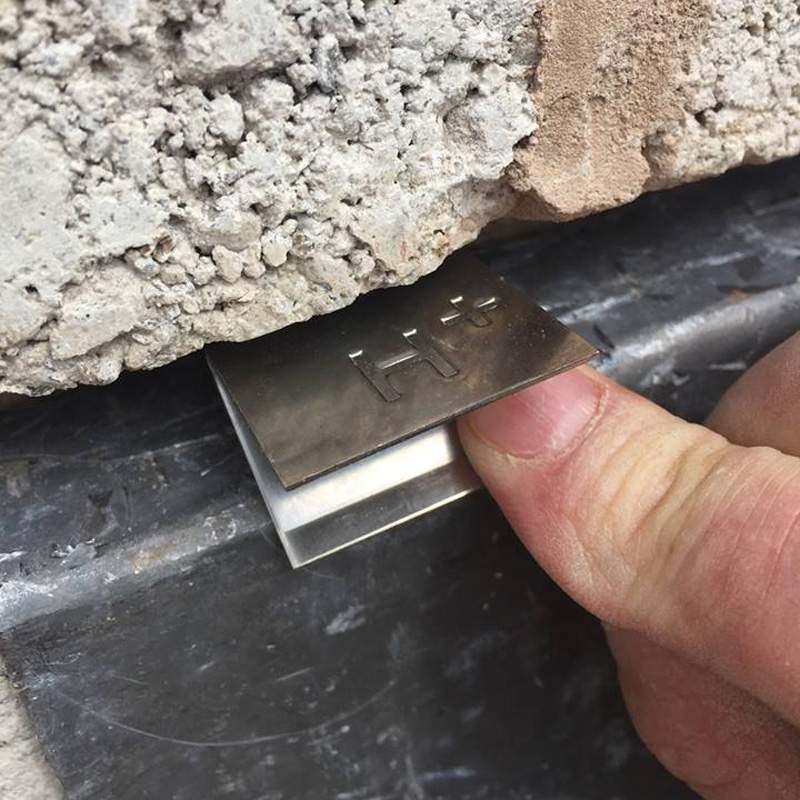
8. Use lead dressing tools
Now, with the lead tools, ensure the lead flashing fits tightly and is dressed into all crevices, corners and into the brickwork. Once this has been done, fold the ledge straps back up and over the edge of the flashing, tapping it down onto the flashing so it acts like a clip.
If your lead flashing is being installed onto a surface that has an edge, for example, above a porch, or an extension that doesn’t run the full width of the house, the flashing should extend over the edge. Cut the angle of the end of the roof into the lead, and then beat the remaining lead over the edge of the surface, folding it around and down with lead dressing tools.
If working on a roof with profiled tiles, lead dressing tools will need to be used to fit the lead flashing up and down across the valleys and troughs of the tiles. Alternatively, the base of a hammer can be used to do this.

9. Secure the chase
Now the chase needs to be secured – this can either be done with traditional mortar or a lead chase sealing product.
Before adding the mortar or sealing product, use a wedge to push the lead flashing down within the chase. This will help provide a key to allow the mortar to bond and help it stay in place for longer.
The next step is pointing – it is important to ensure the mortar or sealant is pushed all the way back into the chase to ensure it remains tight and waterproof. One of the most common issues with flashing is that the mortar isn’t pushed back all the way, resulting in leaking and loose flashing. Once the mortar has been applied, wipe off any excess mortar sitting on the face of the flashing with a cloth.
10. Apply patination oil
The final step is to rub patination oil onto the lead flashing. The patination oil will stop streaking and carbonisation from occurring, ensuring the lead flashing retains a clean look over time.




